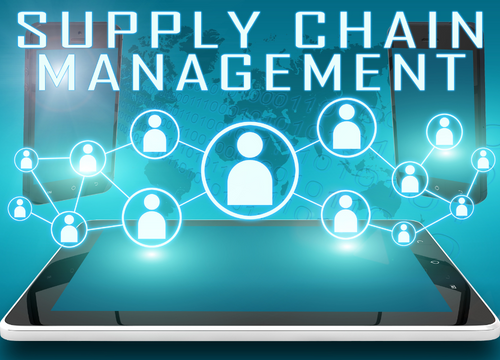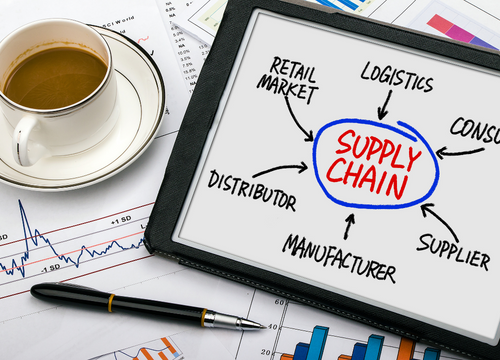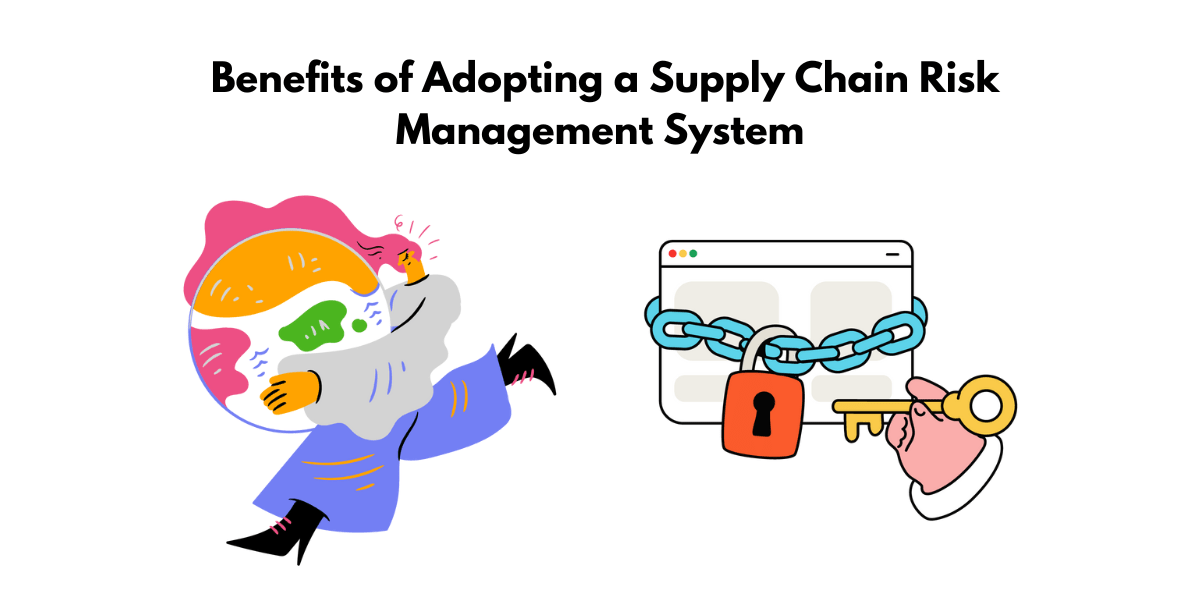What are the Benefits of Adopting a Supply Chain Risk Management System
The Benefits of Adopting a Supply Chain Risk Management System
As a business, you are always at risk of something going wrong with your supply chain. But what exactly is supply chain risk? It is the potential for disruptions within your supply chain that could negatively impact your business operations.
Many risks can disrupt your supply line, from supplier issues and natural disasters to transportation problems and political instability. And while some risks are out of your control, there are ways to mitigate them through effective planning and management.
One way to do this is by adopting a supply chain risk management system. A good SCRM system can help you identify risks, assess their impact, and develop plans to avoid or mitigate them. This post will discuss the benefits of adopting supply chain risk management.
What is supply chain management, and why is it important? Let’s talk about it.

What is supply chain risk management?
Businesses need a system managing supply chain risk to identify and mitigate risks within their supply chains. Such systems also help companies assess the potential impacts of risks on the business, supply chain planning and managing sourcing, procurement, conversion, and logistics activities, and implement global supply chain strategy to gain a competitive edge. By having a system in place that can monitor and manage risks associated with third-party suppliers, businesses can reduce the likelihood of experiencing such risks. Adopting such a system helps businesses protect their operations from unforeseen threats by mitigating any potential risk before it arises.
What are the benefits of adopting a supply chain risk management system?
The potential benefits of implementing a risk management system are significant. By having visibility into the risks that threaten your supply chain, you can take proactive steps to protect your business.
A well-run supply chain is essential to the success of any business. But the reality is that even the best-run supply chains are vulnerable to disruptions. A sudden change in weather conditions can disrupt transportation and throw off production schedules. A supplier might go out of business, leaving you scrambling to find a replacement.
Supply chain risk management aims to identify and mitigate these risks before they cause disruptions. By identifying risks early, you can take steps to avoid or minimize their impact.
There are many benefits to implementing a risk management system, including the following:
Better collaboration with suppliers
It is important to have a good relationship with suppliers to manage supply chain risk, as this can help mitigate the risks of disruptions or errors in the supply chain. Maintaining a positive relationship with suppliers also enables better quality control, leading to fewer defective products and faster delivery schedules. Moreover, having trust between supplier teams leads to faster and more reliable supply chains.
Prioritization of the business continuity plan
Prioritizing a business continuity plan when implementing a supply chain risk management system is important because it helps to mitigate supply chain disruptions. The PPRR model can be used to identify failure points in the supply chain, and by putting protocols in place beforehand, businesses can better prepare for any potential risks. Risk management helps quantify and prioritize risks based on their likelihood of occurrence and potential business impact. Having visibility across the supply chain is essential for understanding and mitigating these risks. Having risk mitigation strategies ready to deploy in case of a risk event will help businesses quickly recover after an incident.

Improved cyber supply chain risk
A supply chain management system helps reduce cyber risks by providing a contingency plan in case of a shortage, identifying and assessing vulnerabilities in the supply chain, increasing the number of sources and suppliers, locating closer to the endpoint of the supply chain, shortening travel time between suppliers, and stress testing the network. Each of these measures reduces cyber risks by creating an environment better prepared for potential threats.
Proactive supplier risk management
Adopting supply chain management systems provide many benefits, such as proactively identifying and mitigating risks from supplier behavior and third-party relationships. A cross-function risk management team can conduct regular assessments to identify and address risks before they become disruptive. Additionally, using data collected during supply chain assessments can help reduce blockages within the supply chain. The competitive advantage enables businesses to better prepare for potential disruptions in their supplier networks.
Better quality control
A supply chain risk management system can improve quality control by standardizing minimum quality criteria with direct and secondary suppliers, monitoring supplier performance, and a supply chain partner with the highest-performing vendors and suppliers to maintain strict quality control. Additionally, it can help build supplier relationship management to avoid or resolve quality issues quickly.
Track freight carrier metrics
Tracking freight carrier metrics is important for supply chain risk management as it helps to identify potential risks and vulnerabilities in the entire supply chain. Evaluating carriers can help prevent disruptions by providing insights into transit times, the number of stops, loading time, or maintenance schedules which can all potentially contribute to disruptions. By tracking these metrics and adjusting accordingly, companies can effectively manage their transportation costs while improving their supply chain efficiency.
Improved risk mitigation
Businesses need to adopt a supply chain risk management system to reduce the risks associated with environmental issues, unexpected events, and market fluctuations. The PPRR risk management model helps businesses identify and prepare for potential disruptions, respond quickly if problems arise, and recover from them. Multisource suppliers can provide multiple pathways around potential issues, while nearshore distributors offer lower costs but shorter cycle times. Additionally, stress tests can help identify vulnerabilities within a supply chain before they become costly problems. Finally, product and plant harmonization ensures product compatibility throughout the supply chain. At the same time, cloud-based architecture reduces the chance of software vulnerabilities being passed from one machine to another in a supply chain. Adopting a comprehensive supply chain risk management system can help protect businesses from unexpected disruptions.

Stronger cash flow
By implementing a supply chain risk management system, a business can improve its cash flow by reducing inventory and associated costs, improving quality and stock control, and fostering better supplier relationships. Better data analytics allows businesses to identify trends accurately and make informed decisions. The business can proactively improve its agility and overall performance by managing risks proactively.
Model risk event situations
It is important to model risk event situations when adopting a supply chain risk management system to identify potential areas of disruption and prepare for potential disasters. By using predictive analytics and other advanced technologies, businesses can gain insight into what risks may arise in their supply chain before they happen. This helps them easily spot gaps or weak points in their systems so that they can make plans to mitigate such risks if they occur.
Reduced inventory and overhead costs
A supply chain risk management system can help reduce inventory and overhead costs by enabling companies to determine the necessary inventory levels based on their goals. Companies can reduce warehouse fulfillment costs and logistics costs by reducing slow-moving inventory levels.
A more agile business
A supply chain risk management system helps businesses become more agile by collaborating better with suppliers, improving quality control, and shipping products more efficiently. Companies can ensure that their suppliers are prepared to grow with the company by preparing for potential supplier capacity issues before they arise. Investing in such a system upfront allows businesses to avoid potential disruptions in production down the line.
Better visibility and data analytics
Adopting a supply chain risk management system can provide numerous benefits to organizations. With it, decision-makers can access real-time insights into their supply chain’s performance and use data-driven approaches to optimize processes and strengthen supplier relationships. Additionally, implementing such a system can help organizations gain better visibility in their supply chain operations, resulting in cost control, secure logistics partnerships, and improved technology use. Furthermore, having a supply chain risk management system may lead to faster deliveries and more efficient use of resources.

What is the supply chain risk management process?
The supply chain risk management process is a framework businesses use to identify, assess, and mitigate risks throughout their supply chains.
The goal of the process is to minimize disruptions and maximize resilience in the face of potential risks. By identifying and addressing risks early on, businesses can avoid or reduce the impact of Supply Chain Disruptions (SCDs).
Step 1: Identify and prioritize business continuity plans
The first step of the supply chain risk management process is to identify and assess risks. This step is important because it helps to create visibility across the supply chain and quantify risks so they can be prioritized based on their impact on business and financial goals. Identifying potential risk events allows for implementing mitigations in case of an event, which helps avoid business disruption and quick recovery if an event does occur.
Step 2: Proactively manage supplier risks
It is important to proactively manage supplier risks in the supply chain risk management process to identify and mitigate potential risks. By conducting internal and external audits, organizations can ensure that they are getting the best possible product at all times. Having a risk management program in place with an integrated cloud solution to collect data centrally, model risks, present them transparently along the value chain, and provide an interface for suppliers allows organizations to prepare effectively for any potential risks from their supplier network. Finally, having a cross-functional task force with data science skills can help create IT solutions that support process security and identify the most effective solutions.
Step 3: Optimize shipping processes
The third step of the supply chain risk management process is to reduce unnecessary spending to achieve leaner operations and reduce overall logistics costs. Automation solutions can be implemented to improve warehouse productivity and lower fulfillment costs, thereby helping businesses ship their products quickly and accurately.
Step 4: Manage environmental risks
Managing environmental risks in the supply chain risk management process is important to ensure business continuity. Unmanaged environmental risks can create various issues, from material or financial losses to legal action. By assessing potential risks and implementing mitigation strategies, businesses can reduce the likelihood of experiencing such issues. Additionally, by taking proactive measures when managing environmental risks, companies can benefit from improved relationships with suppliers or customers and increased efficiency and cost savings.
Step 5: Track freight carrier metrics
Tracking freight carrier metrics can help with supply chain risk management by providing data to base decisions on, initiating contact with carriers and customers when appropriate, facilitating complete and thorough communication between both parties, organizing and tracking freight on an appropriate schedule, escalating events through management channels when needed, composing office-appropriate communications through a variety of media channels, continually adapting to changing processes while working towards standardization, having a flexible work schedule that allows for rotating weekend shifts as needed and helping to identify patterns or trends to make informed decisions. Several benefits are also associated with tracking freight carrier metrics, such as competitive pay rates and profit-sharing opportunities.
Step 6: Model risk event situations
The purpose of modeling risk event situations in the supply chain risk management process is to identify the potential gaps in business operations that may lead to disasters and help prepare adequately. It can also provide warning signs of impending disasters and can be further enhanced with predictive analysis that can help identify risks before they happen.
Step 7: Invest in a supply chain software firm
Companies should invest in a supply chain software firm to improve logistics efficiency. Supply chain software firms offer a range of capabilities that can help companies automate and streamline processes, allowing them to achieve their goals faster and more efficiently. Additionally, supply chain risk management software can help reduce the risks associated with operating a digital business by providing real-time data management, risk monitoring, and transforming data into risk models that are much easier for stakeholders to understand. By investing in this technology solution, companies will benefit from improved preventative measures and proactive approaches toward managing their supply chain risk.
Step 8: Reduce inventory and overhead costs
Reducing inventory and overhead costs helps to manage supply chain risks by decreasing the amount of slow-moving inventory, which reduces fulfillment costs. A leaner inventory also increases pressure on physical distribution networks, reducing resilience to supply chain shocks. Furthermore, identifying an optimal inventory level is essential for proper risk management. These measures can help reduce unnecessary spending and further protect against risks within the supply chain.
FAQs
Here are some of the most frequently asked questions about supply chain risk management:
What is a supply chain?
The supply chain is an integral part of any business and is responsible for producing and delivering goods or services from the beginning to the end. It encompasses all aspects of the process, such as sourcing, manufacturing, distribution, and logistics. Mapping out a company’s supply chain can be essential in conducting external analysis as part of strategic planning. The components that make up a supply chain vary depending on industry needs but typically involve checkout systems, order fulfillment systems, payment processing systems, and delivery mechanisms. Understanding these components makes it possible to identify potential risks within the system while also optimizing performance. With customer orders often relying on an efficient supply chain system having an effective risk management plan can help maximize productivity while reducing costs associated with mistakes or delays in fulfilling orders.

How do you improve supply chain risk management?
Risk management must become a priority within an organization’s culture to be successful. Employing a systematic and structured approach to risk management is essential for any business facing the unpredictable nature of today’s economy. Risk identification and assessment should cover internal and external risks throughout the supply chain, from identification through mitigation to prevention. Companies should invest in supply chain risk management systems that can help provide insight into potential issues before they arise, allowing them to take proactive steps toward mitigating potential risks. By adopting such systems, organizations can gain greater visibility into their overall operations, enhancing efficiency and reducing costs while reducing their overall exposure to risk.
How do you define a robust supply chain?
A robust supply chain is an efficient network of multiple companies that enable the smooth flow of materials and services from suppliers to customers. It consists of different tiers, or stages, in which goods and services move through a company’s supply chain. Such a system facilitates business operations, reduces costs, and increases efficiency. By adopting a Supply Chain Risk Management System (SCRM), businesses can identify risks in their supply chain early on and take action to mitigate them before they become problematic. This helps businesses stay agile and competitive while minimizing disruptions due to unexpected events or changes in the market environment.
What are some common supply chain risks?
Common risks associated with supply chains can come from outside the organization, such as unpredictable customer demand or environmental risks. These risks can include disruptions in the supply chain that could harm the organization and economic, geopolitical, environmental, and cybersecurity factors. Supply chain risk is also associated with labor and union issues which could cause long-term disruption. Financial risks could arise from unexpected changes in exchange rates, while miscalculations of product demand or missed delivery deadlines cause supply and demand risks. Businesses may also face unexpected purchasing trends or demand changes due to geopolitical events, economic price fluctuations, and material shortages. Cybersecurity is an added threat for organizations as it risks compromising data systems through malicious actors, faulty equipment, or human error within their supply chain networks.
What are the main risks facing a supply chain?
The main risks facing a supply chain include external, environmental, supply chain disruptions, labor and union issues, financial risks, demand spikes or falls in product demand, delays at ports and borders, and cybersecurity risks. External supply chain risks are harder to predict and can include miscalculation of product demand or disruption to the flow of raw materials. Environmental risk can arise from social-economic, political, governmental, or environmental issues, while financial risk comes from unexpected changes in exchange rates. Supply chain disruptions may be caused by unexpected changes in any business entities necessary to keep the supply running smoothly, and compromised information or systems from sources such as cyberattacks, data breaches, or data leakage cause a cyber security risk. To mitigate these types of risks, it is important to have a comprehensive risk assessment system and an insurance policy that protects against these types of disruptions.
- What are the Benefits of Adopting a Supply Chain Risk Management System - December 23, 2022






